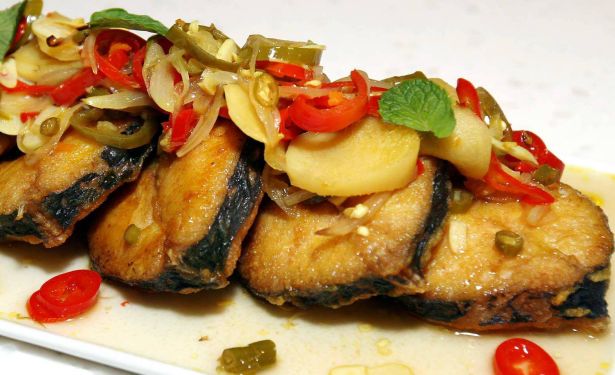Recipe Description
Naan has made its mark in South Asian Cuisine through centuries. History says it originated in the Imperial courts of Delhi. It flourished and spread during the reign of Moguls. Though commonly related to Indian Cuisine, it’s found in Northern Area of India, Pakistan, Afghanistan, Bangladesh, Iran, Uzbekistan, Tajikistan and surrounding areas. In Turkic languages, such as Uzbek, Kazakh and Uyghur, the flat breads are commonly known as NAAN. Basic Ingredients for Naan is usually All-Purpose Flour, Milk, Butter/Ghee, Sugar, Salt and Dry Yeast. Some recipes call for Baking Powder. Adding Milk to knead the dough gives a perfect volume and thickness to the bread. Traditionally Naan is cooked in a ‘TANDOOR’. But it can be baked in an electric oven or it can be cooked on a hot griddle. It is served hot with a blob of butter over it or ghee brushed over the bread. This is Butter Naan recipe and what makes it different from Plain Naan is the amount of BUTTER added while kneading the dough and how the Butter Naan is served. Obviously, it is served with a hearty blob of Butter or served hot, brushed with ample of Butter. The fresh aroma of Butter makes this Naan a delicacy of its own. Though believed to have originated in India, it has found its place in most of the South Asian restaurants and homes around the globe. From a basic Flat Bread, it has taken different variations by experimental chefs and food enthusiasts. Transformed into more flavourful creations with innovative fillings to suit the palate.

Recipe Ingredient
- 1/2 Teaspoon Yeast
- 1/4 Cup Warm Water
- 2-3 Teaspoons Sugar
- 3 Cups All Purpose Flour
- 2 Teaspoons Baking Powder
- 1/2 Cup Curd / Yogurt
- 1/2 Cup Milk
- 4 Teaspoons Butter
- 2 Teaspoons Sugar
- 4 Teaspoons Ghee/Oil
Instructions
- Activate the Yeast in 1/4 cup of Warm Water along with 2-3 teaspoons of Sugar and leave it aside to ferment.
- Sieve the Flour along with Baking Powder and Salt once. Add Sugar and Butter to the flour and mix well. Make a well in the centre and pour the Curd and Yeast mixture.
- Make a soft dough by adding the required amount of milk, little by little. Add melted Ghee/Oil to the dough and knead it again for 3-4 minutes until the dough is pliable. Cover the dough with a wet cloth and keep it aside for 4 hours or until the dough doubles up.
- Once the dough has doubled up, knead it again. Keep it aside for an hour(if time permits). Take one big orange sized amount of dough and roll it out, as for chapatis, but a little thicker. Cut it into half or you can roll it out into triangles, or into teardrop/oval shape. It can be rolled into a circle and then cut it into two/four or roll it out into any desired shape.
- Heat the griddle. Roll Naans into oval/teardrop shape or cut it into two/four from a circle or roll it out into any desired shape.
- Placed the rolled Naans over the griddle. Let the flame be at the high. Wait until the bubbles start to form over the Naans. Now lower the flame, flip and cook the other side of the Naan for few minutes. Serve hot as such or brush Ghee over the Naan or serve it along with a blob of butter.
- Preheat the oven to 180 Degree Celsius. Place the rolled Naans on the baking tray.
- Bake them in the preheated oven for about 4-5 minutes. Flip and bake them again for about 3-5 minutes. Remove the Naans from oven and then brush butter/ghee over it.
- Sifting the dry ingredients once makes the flour lighter and combines all ingredients evenly. This also helps you to get a soft and pliable dough.
- Can use water or milk to knead the dough. Add little at a time.
- Iron griddles work best to make Naans rather than Non-Stick griddles.
- Smear some fresh butter/ghee over hot Naans before serving.
- Goes well with Vegetarian and Non-Vegetarian Gravies.










